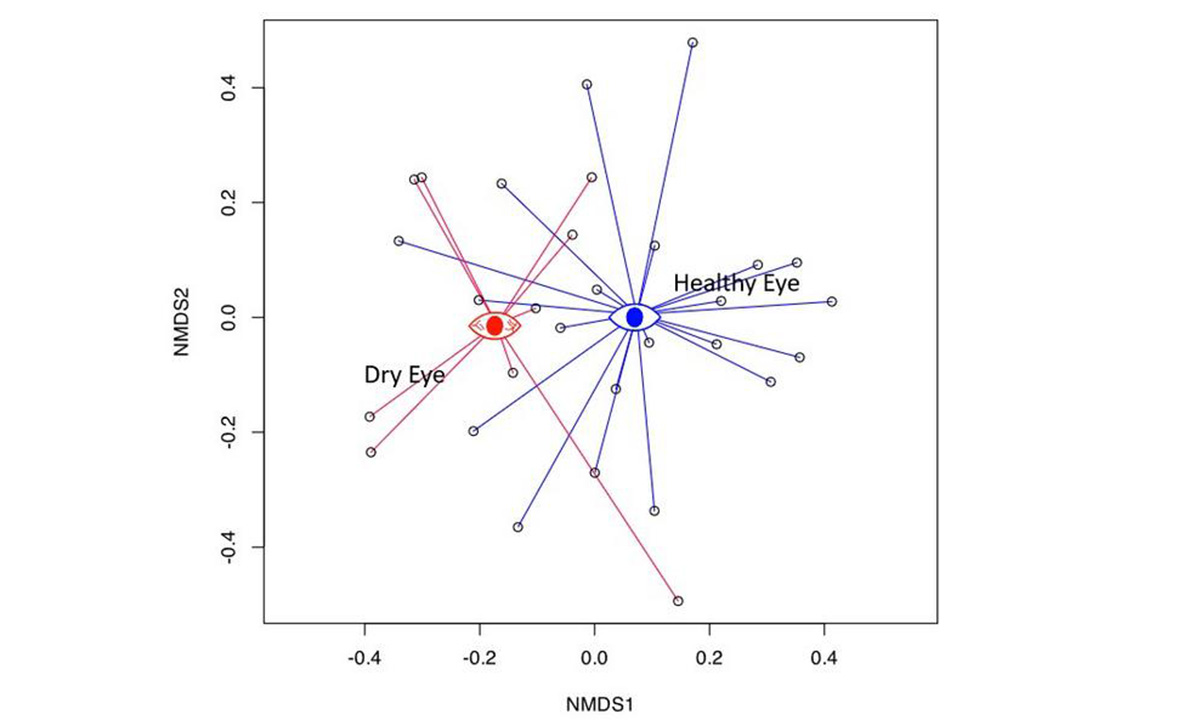Researchers uncover the microbial secrets of dry eye
Insights into the ocular microbiome could have implications beyond eye health.

Researchers have used advanced sequencing technology to determine how the mix of microbes present in patients with healthy eyes differs from the mix found in patients with dry eye. The new work could lead to improved treatments for various eye problems and for diseases affecting other parts of the body.
Microbial communities in and on our body — collectively referred to as the human microbiota — play an essential role in keeping us healthy. Although many studies have focused on microbial communities in our gut, understanding the microbiota present in other body sites is critical for advancing our knowledge of human health and developing targeted interventions for disease prevention and treatment.
“Once we understand the eye microbiota properly, it will improve disease diagnosis at an early stage,” said research team leader Alexandra Van Kley, a professor at Stephen F. Austin State University in Nacogdoches, Texas. “This knowledge can also serve as a catalyst for developing innovative therapies aimed at preventing and treating ocular disease as well as those that affect the central microbiome site: the gut.”
“Human microbiome research suggests a strong connection between the gut microbiome and the brain and eyes,” said Sharma. “Any alteration in the gut microbiome affects other organs and can lead to disease. Therefore, we are trying to identify patterns of an imbalance between the types of microbes present in a person's ocular microbiome for people with different health problems.”
For the study, the researchers collected eye samples from 30 volunteers using a swab and then performed 16S rRNA sequencing and bioinformatic analysis to determine the microbiome distribution for patients with healthy eyes and those with dry eyes.The analysis showed that Streptococcus and Pedobacter bacteria species were the most prevalent microbes in healthy eyes while more Acinetobacter species were present in the eye microbiomes of people with dry eye. “We think the metabolites produced by these bacteria are responsible for dry eye conditions,” said Sharma. “We are performing further research to understand the metabolic pathways associated with the Acinetobacter to better understand the disease.”
Next, the researchers would like to explore the gut microbiome of the patients with dry eye to better understand how it related to the eye microbe differences they observed.
Source: American Society for Biochemistry and Molecular Biology (ASBMB)